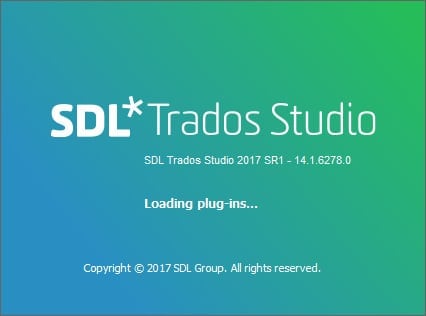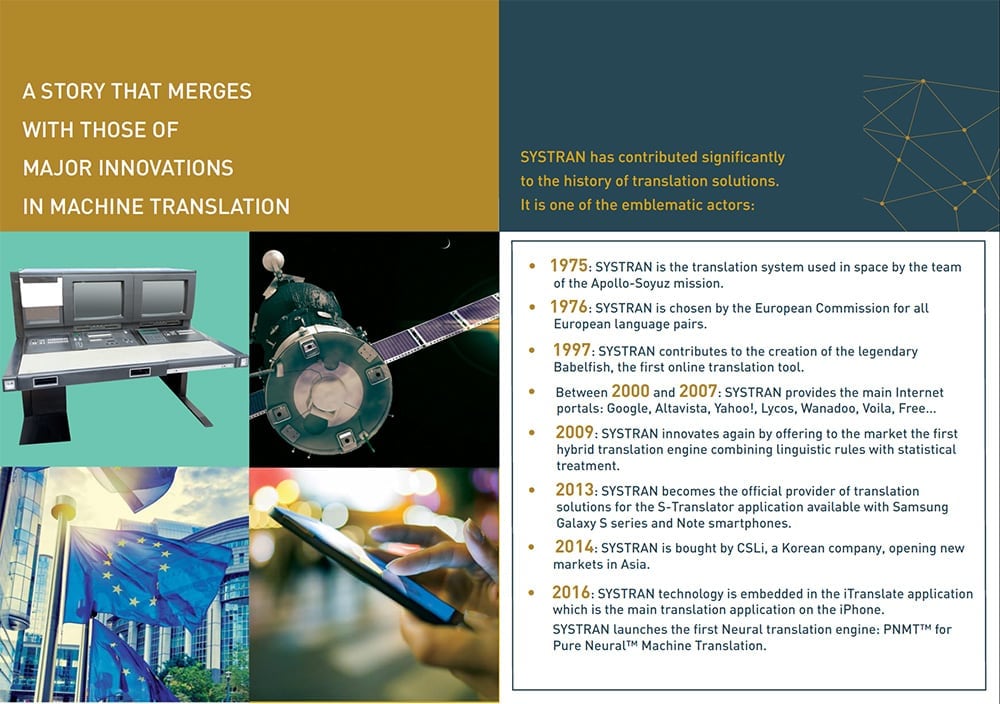Technologies we Use

SDL Trados Studio 2017
SDL Trados Studio 2017 is the complete CAT tool for language professionals who want to edit and review projects with agreed-upon terminology. It is used by over 250,000 professionals worldwide.
New features and functionality in SDL Trados Studio 2017 include AdaptiveMT which learns from your post-edits, job to job, so that machine translation output is unique to your tone, terminology and linguistic style.

Pure Neural™ Machine Translation
This technology, based on complex algorithms at the forefront of Deep Learning, enables the PNMT™ (Pure Neural™ Machine Translation) engine to learn, generate language rules from a given translated text, and then produce a translation that both overachieves the current state-of-the-art ones.

G Suite: Cutting-Edge Security and Data Protection
We have chosen G-Suite for Business, to ensure we meet stringent privacy and security standards based on industry best practices. In addition to strong contractual commitments regarding data ownership, data use, security, transparency, and accountability, we have the tools that meet all our compliance and data privacy requirements.
For our customers in Europe, we provide capabilities and contractual commitments designed specifically to help address EU data protection requirements, as interpreted by the guidance provided by the Article 29 Working Party. G Suite offers EU Model Contract Clauses and a Data Processing Amendment. We adhere to the EU-US Privacy Shield Framework. Additionally, G Suite has been assessed as appropriate for use with the UK government’s Security Principles for information classified as OFFICIAL (including OFFICIAL-SENSITIVE).
First, machine translation. Now? Pure neural machine translation
Unlike the engines behind statistical machine translation (SMT) or rule-based machine translation (RBMT), neural machine translation (NMT) engines process the entire sentence from start-to-end, with no intermediate stages between source and target sentence. This means that, similar to the human brain, task-specific neural sub-networks work concurrently within the neural network while the translation is being generated:
- One sub-network addresses the source sentence to extract its meaning;
- A second sub-network addresses grammar or semantic analysis (word meaning) to enrich understanding;
- A third one brings attention to important words at a select stage of the translation;
- A fourth brings attention to contextual knowledge to generate a structured and fluent translation;
- And finally, a fifth sub-network addresses the translation as specific to a domain.
All these sub-networks working together ultimately result in a superior translation and a quality of content that far surpasses previous MT tools. It’s as if the neural network truly “understands” the intended meaning of content as it relates to translation. Furthermore, after a draft translation is generated with Systran’s PNMT (Pure Neural Machine Translation), our translators can then choose and apply their preferred terms -- the software “learns” these preferences and adds them to the database.
Pure Neural Translation will not replace human translation skills any time soon, but for certain type of documents – such as technical or scientific -- it can significantly aid and accelerate the process of a human translator.
The ON TARGET Translation policy is to discuss the use of machine translation with all clients, with the stipulation that our human translators will always review any machine-generated content to ensure a flawless translation from all perspectives.
A few examples of challenges that benefit most from PNMT:
- A huge volume of source content that is so large it could not be done by a human translator in a reasonable time frame;
- A translation that needs a rapid turnaround (days, hours or minutes) for rush release to consumers.
- Any translation that would benefit from tight deadlines while still maintaining optimal quality content.
Contact us today for a quick and simple demonstration of Systran PNMT advantages as they might relate to your needs!
Translation and localization often require fast turnaround of high volumes of material, with rigorous consistency of terminology and style. SDL Trados Studio, our CAT tool of choice, makes this possible since our translators can transfer translation memories (TM), update them while they translate, and send them back to the system. Here are the three different scenarios they encounter each time they translate a new segment of text:
Exact match: the translation memory (TM) identifies the new segment as a repetition of a previous one, and automatically reuses a stored translation. This is, traditionally, how the bulk of the productivity gain from CAT tools has been obtained.
Fuzzy match: the TM identifies the new segment is similar to but not a perfect repetition of a previous segment. It reuses a stored translation, saving some time, but the translator needs to edit the translation more or less significantly before proceeding.
No match: the TM cannot find any similarity between the new segment and the segments in its database. The segment is manually translated from scratch, or it can be pre-translated using a machine translation (MT) service and post-edited.
This represents a huge financial advantage for the client as the cost per source word is directly proportional to the percentage match. For example, a phrase or paragraph similar at 75% to 84% to the client’s translation memory database would be discounted by 50%.
Consistency across all your communication is key
To be creative and use synonyms is good, even desirable, for content with marketing and advertising purposes, when it is about creating “one-off”, unique publications. However, for technical content in the source and relevant target languages, consistency is a must. First of all, because it saves time and money by making the task of writing and translating easier: once a solution for a term or an expression (or phrase) is found, there is no need for “reinventing the wheel”.
Second of all, because users of the relevant documentation have to be able to understand the content by finding in it unequivocal designations for given concepts, in order to avoid misunderstandings that could result in more or less serious risks for the manufacturer (usability and liability-related requirements).
Finally, because the corporate customers want the content recipients to clearly distinguish them by means of their targeted, specific corporate vocabulary (requirements related to brand and corporate identity).
Adaptative Machine Translation: the new tool in the SDL Studio arsenal
Adaptative MT, a new component of Studio 2017, adapts in real time to the terminology and style of the translator, based on each individual post-edited segment that is sent back to the engine. Automatic Concordance Search offers relevant translation suggestions for words or groups of words based on existing results from within the translation memory.
Contact us and we will be happy to organize a live demonstration on how SDL Studio 2017 can help you lower your cost and accelerate your time to market!


